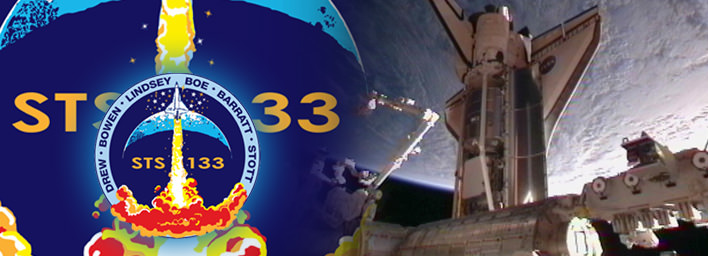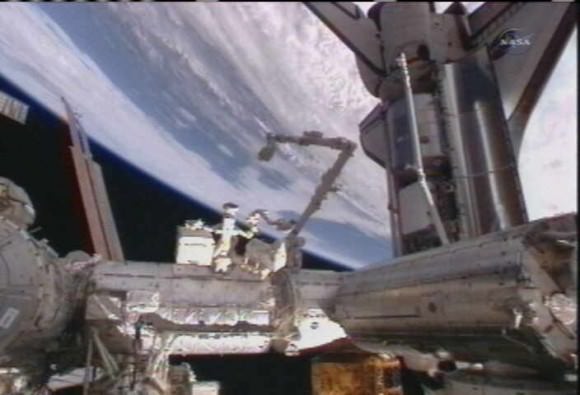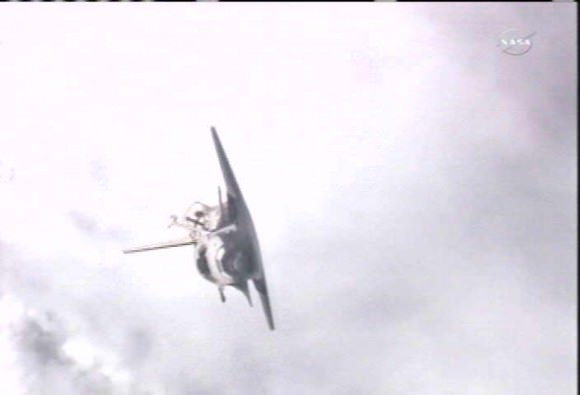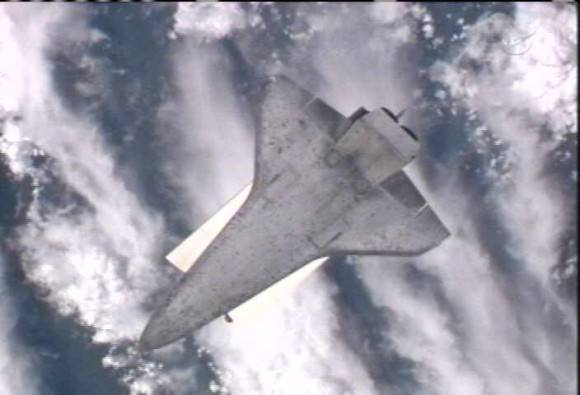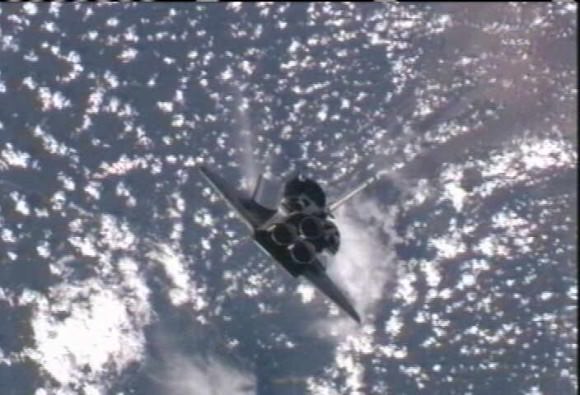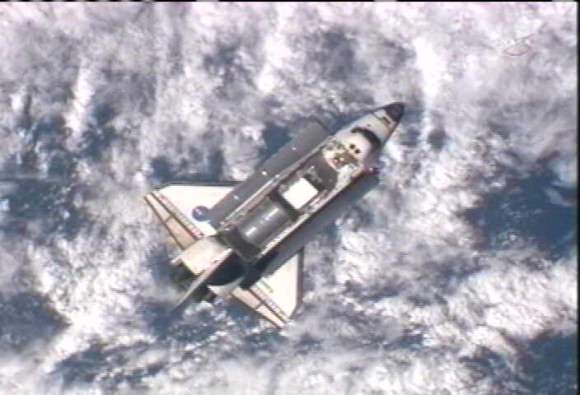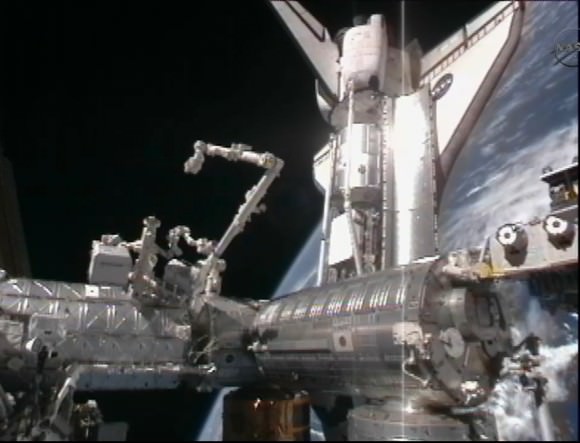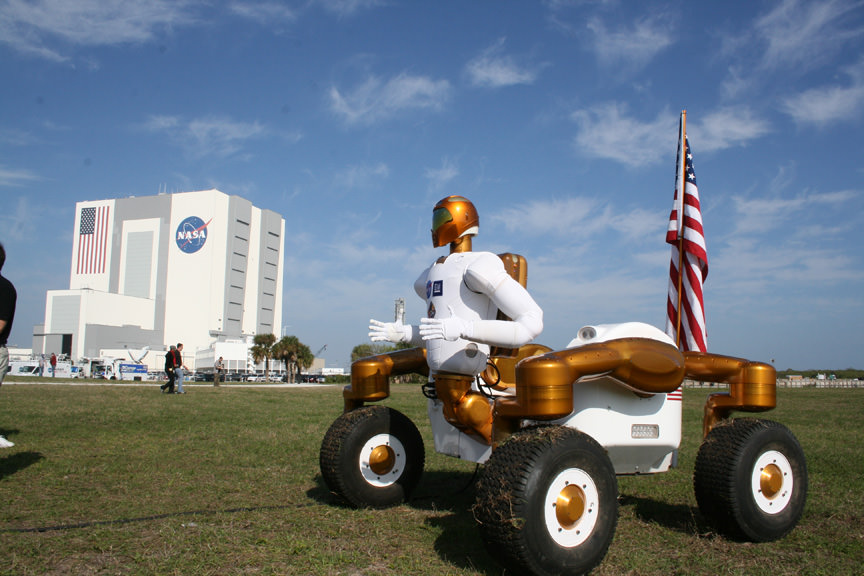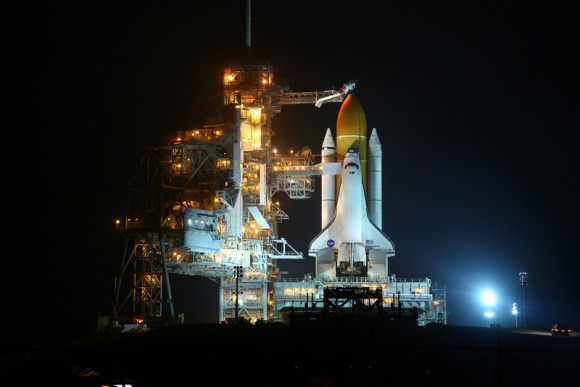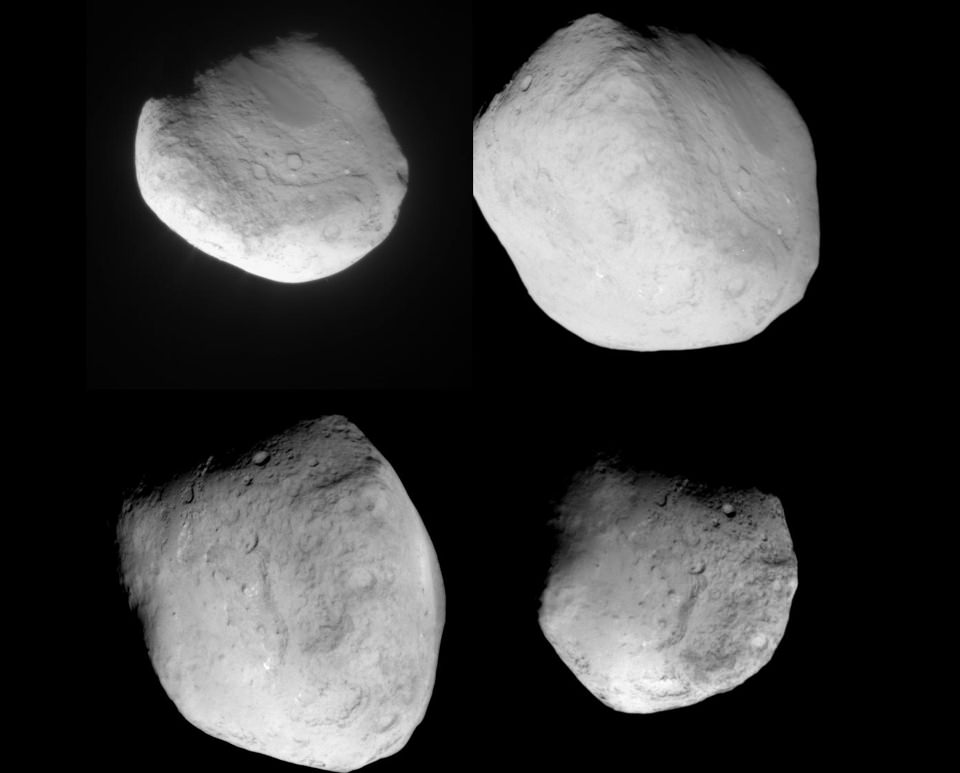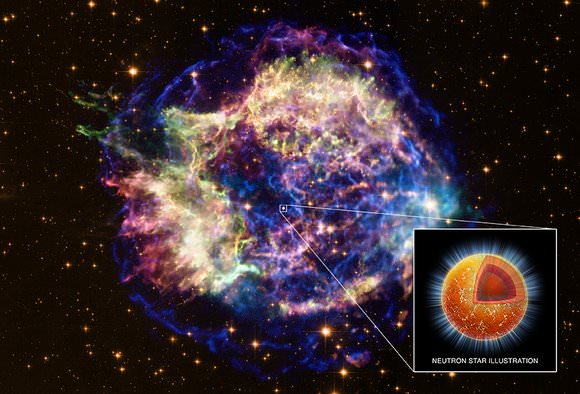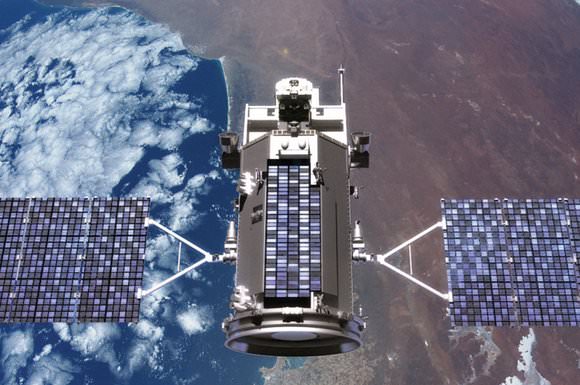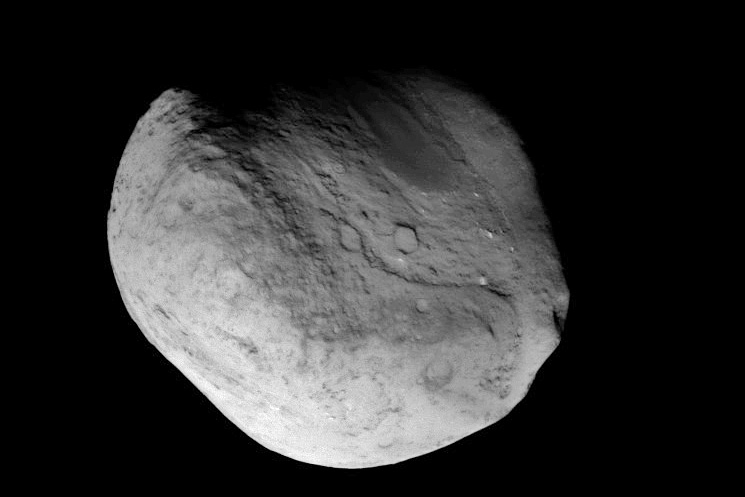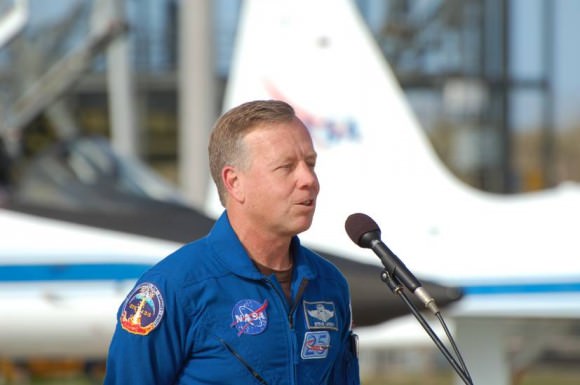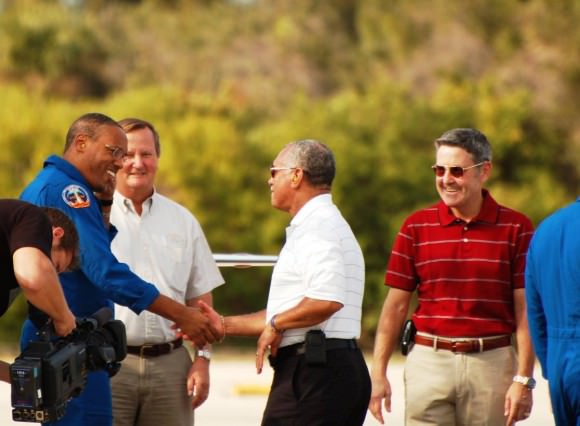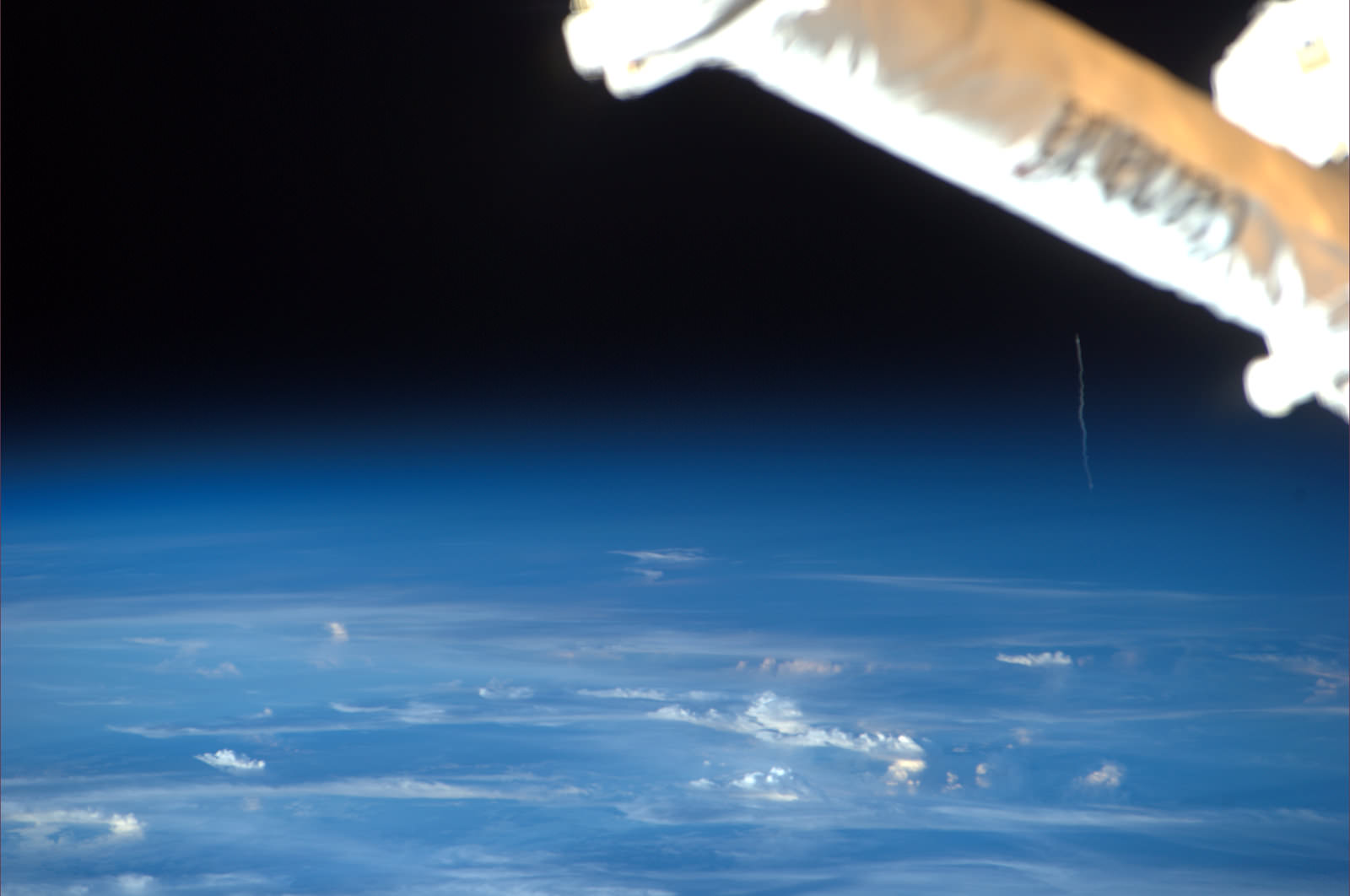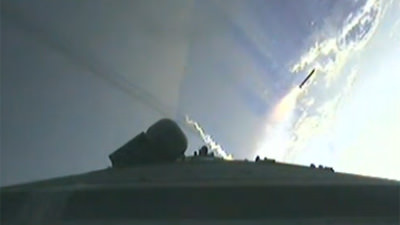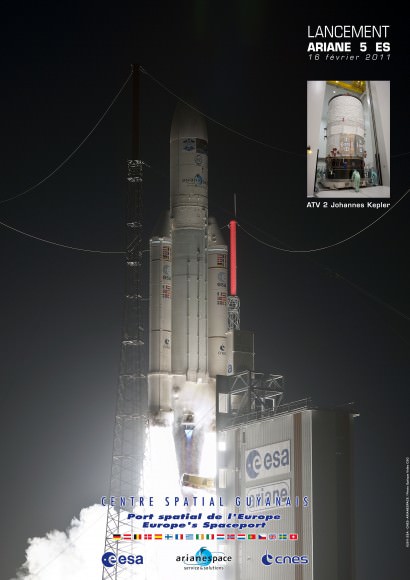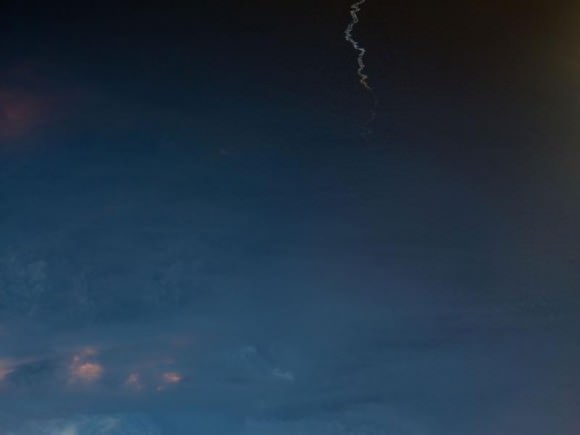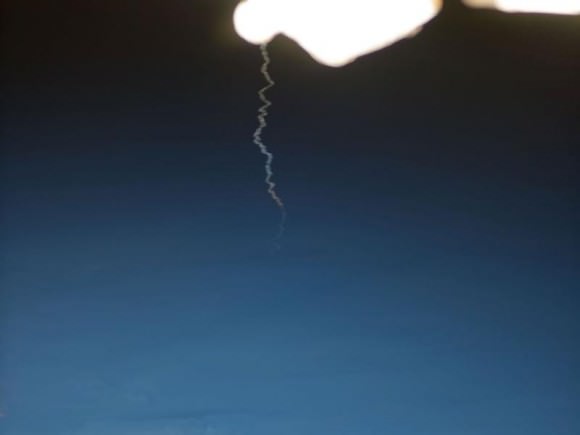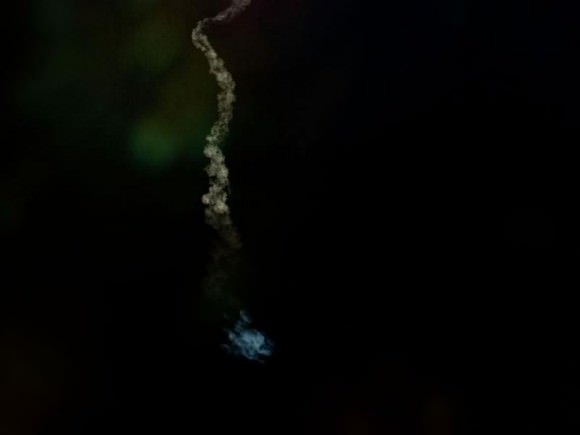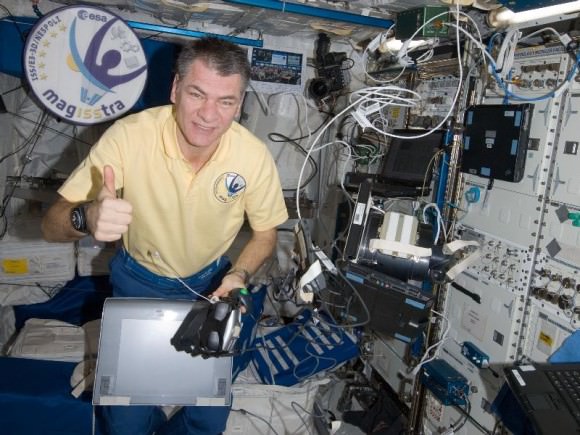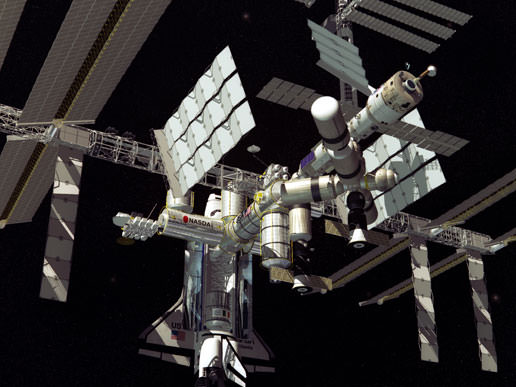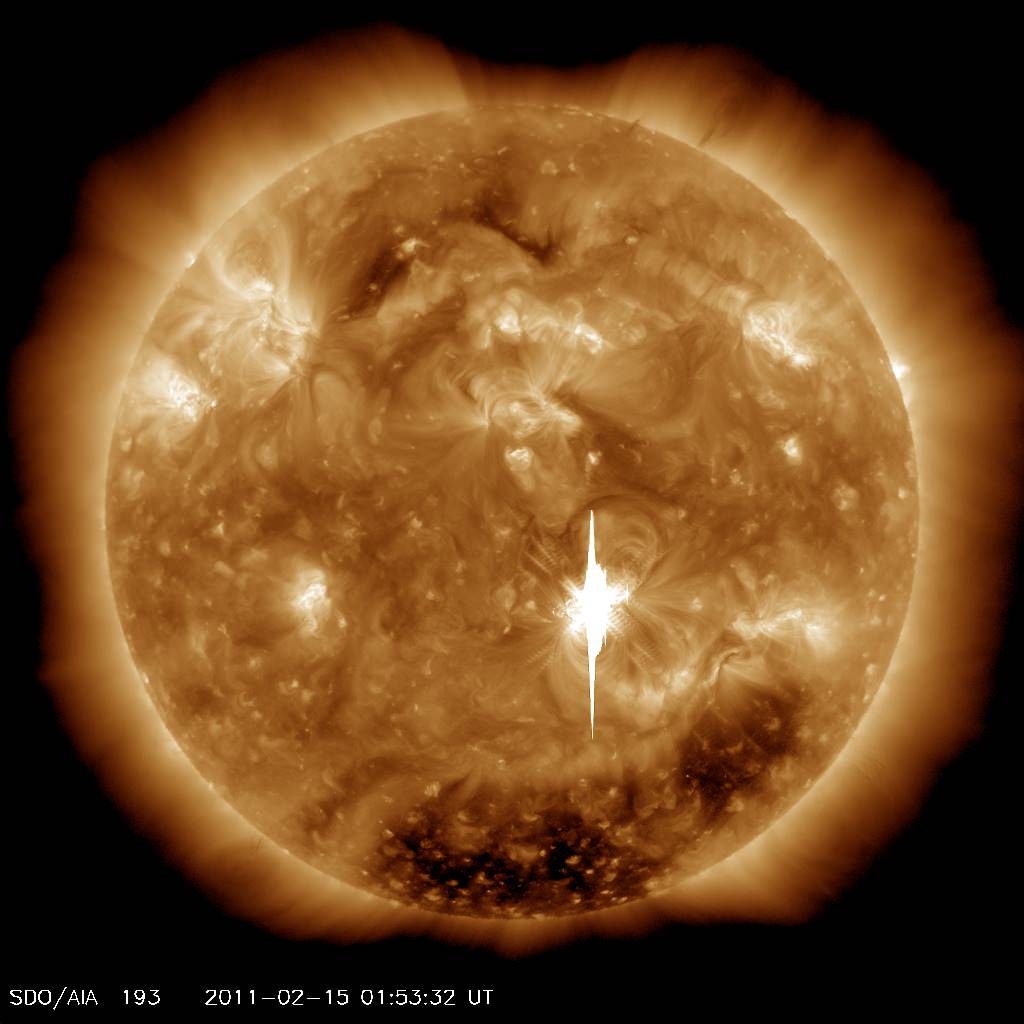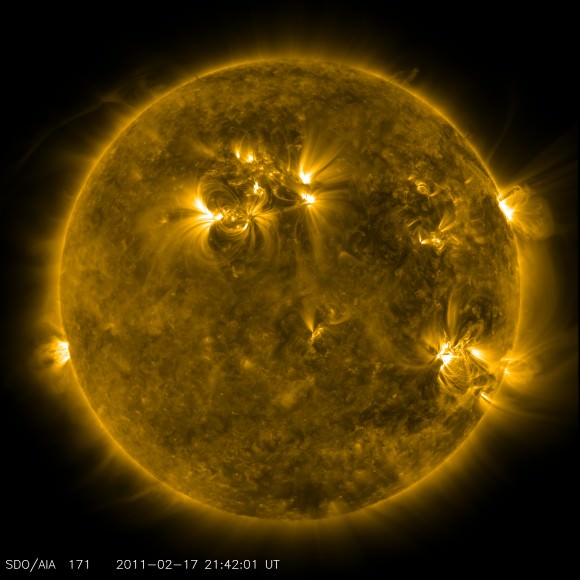[/caption]
Space Shuttle Discovery linked up to the International Space Station (ISS) today, Feb. 26, on her historic final voyage and still charting new frontiers by carrying the first ever joint space crew of humans and robots.
The all veteran human crew is comprised of five men and one women including Commander Steve Lindsey, Pilot Eric Boe and Mission Specialists Alvin Drew, Steve Bowen, Michael Barratt and Nicole Stott. For the first time in the history of manned spaceflight, the humans are joined by a robotic companion named R2 or Robonaut 2. R2 is the first humanoid robot in space and will become an official member of the ISS crew.
See Discovery Launch, Docking and Robonaut photo album below.
Discovery docked at the ISS at 2:14 p.m. EST at the Harmony node while flying some 220 miles above western Australia. The shuttle arrived after a two day orbital chase that commenced with a picture perfect blast off on Feb. 24 from the Kennedy Space Center in Florida.
Shuttle Commander Steve Lindsey manually flew Discovery to join the two ships together. They have a combined mass of over 1.2 million pounds. This was Discovery’s 13th and final docking to the orbiting outpost. Discovery also was the first shuttle to dock to the ISS on the STS-96 mission on May 29, 1999.
After allowing the relative motions between the two ships to dampen out, the vehicles were then hard mated together. Hatches between the spacecraft were opened at 4:16 p.m. EST and the six Shuttle astronauts floated through the docking tunnel and into the station. They were welcomed by the six current residents already living and working aboard the ISS and thereby doubled the ISS human population to 12.
Prior to docking, Discovery executed a spectacular head over heels “back flip” with Commander Lindsey at the controls so that ISS crew members Paolo Nespoli and Cady Coleman could take hundreds of high resolution photographs of the shuttles critical heat shield tiles.
Over a period of nine minutes, Discovery rotated backward through a full 360 degrees during the dramatic maneuver with Earth as the backdrop.
The fragile thermal protection system (TPS) tiles protect the orbiter from the scorching heat generated during reentry through the Earth’s atmosphere. Specialists on the ground at the Johnson Space Center will pore over the images to look for any signs of tile damage which may have occurred during launch or on orbit.
Discovery’s cargo bay is loaded with a large new pressurized storage room and critical space parts for the space station. The primary goal of the STS-133 mission is to attach the new Permanent Multipurpose Module named “Leonardo” to the ISS which will provide additional living space for the station crews.
R2 is packed inside Leonardo along with science equipment, spare parts, clothing, food and assorted gear. The robot will serve as an assistant to the ISS astronauts and conduct science experiments and maintenance chores.
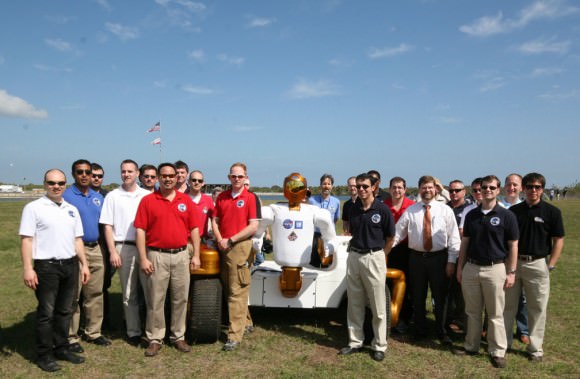
Robonaut 2 and the NASA/GM team of scientists and engineers watched the launch of Space Shuttle Discovery and the first joint Human-Robot crew on the STS-133 mission on Feb. 24, 2011 from the Kennedy Space Center. Credit: Ken Kremer
See a stunning 360 degree panorama of Robonaut 2 at KSC from nasatech.net at this link
The twin brother of R2 eagerly watched the Feb, 24 blastoff of Discovery and crew live from nearby the famous countdown clock at the Kennedy Space Center.
The 11 day flight includes two spacewalks.
With Discovery safely docked , the ISS is now the biggest it has even been and is currently configured with all vehicles which fly to the station including the newly arrived ATV from Europe, HTV from Japan and Soyuz and Progress spacecraft from Russia.
The ATV itself arrived docked barely 4 hours before Discovery in a critical operation that paved the way for blastoff of the STS-133 mission and reflects the magnitude of the ongoing orbital traffic jam at the ISS.
If all the STS-133 work is successfully accomplished, a Soyuz will undock towards the end of the STS-133 mission and stage a station fly around to capture the ultimate ISS photo op at the biggest it will ever be.
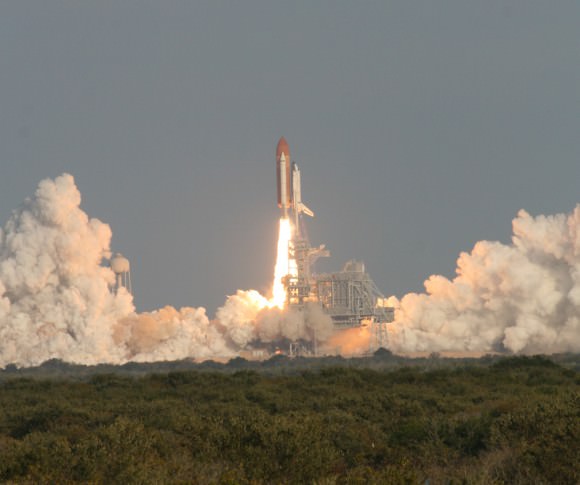
from launch pad 39 A at the Kennedy Space Center. Credit: Ken Kremer
Photo Album: Discovery executes dramatic back flip or Rendezvous Pitch Maneuver (RPM) as it approaches and docks at the ISS on Feb. 26, 2011
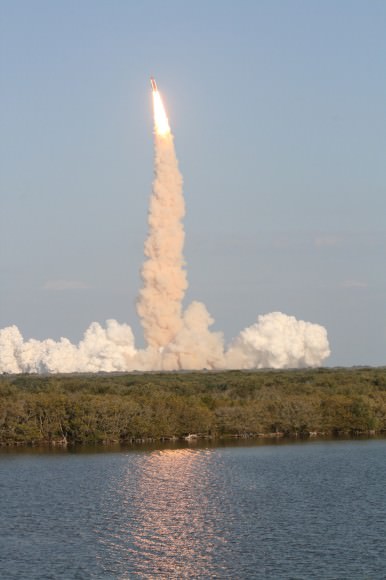
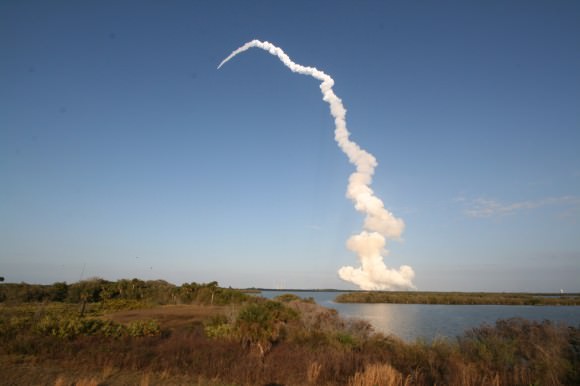
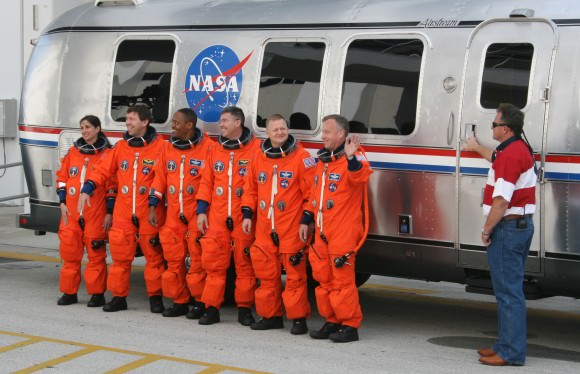
wave to large and enthusiastic crowd of space shuttle workers and media spectators before heading to the launch pad in the Astrovan for the STS-133 mission. From left are Mission Specialists Nicole Stott, Michael Barratt, Alvin Drew and Steve Bowen; Pilot Eric Boe; and Commander Steve Lindsey. Discovery will deliver the Permanent Multipurpose Module, packed with supplies and critical spare parts, as well as Robonaut 2 to the ISS. Credit: Ken Kremer

